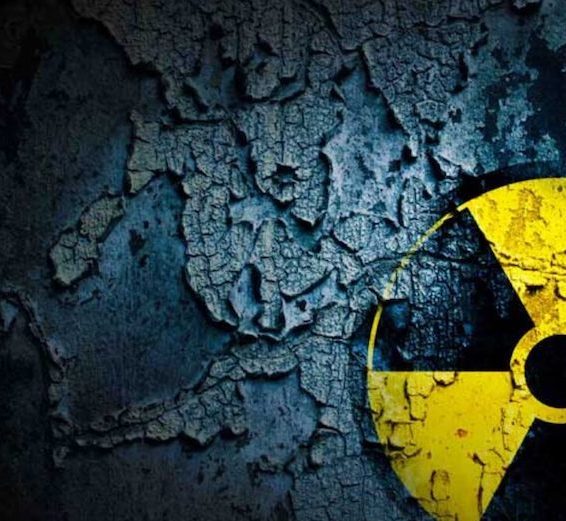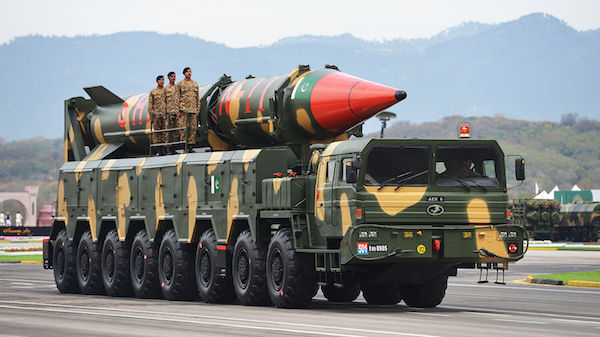The international debate on South Asian nuclear politics usually adopts an inadequate approach when examining the strategic capabilities of both India and Pakistan. The leading global academic communities try to communicate their arguments on the South Asian nuclear arms race by adopting different angles for New Delhi and Islamabad. The decades-long rivalry between India and Pakistan was the fundamental reason for the regional nuclearisation of 1998 when Pakistan was compelled to test its nuclear devices in response to New Delhi’s decision to detonate nuclear devices. Thus the mainstream studies on the South Asian security environment started emphasising on the India-Pakistan nuclear competition, where Islamabad became the gravitational point of critical international debates. No doubt, a thin layer of literature on impartial examination of India-Pakistan nuclear capabilities attempted to explain Pakistan’s position in the regional South Asian nuclear order. However, Pakistan’s standing on the mainstream arms control and disarmament issues remained less scholarly significance globally. Thus, the book under review has tried to highlight Pakistan’s position on the major nuclear issues at regional and international levels. The book is published by an Islamabad-based independent research institute established in 2013 to project strategic foresight on various national and international imports. The book is an edited volume outstandingly assembled by Zafar Iqbal Cheema, the founder and President/Executive Director of the Strategic Vision Institute (SVI). Cheema is a renowned Pakistani academic figure and has received recognition in various scholarly gatherings of different countries. While sharing his intellectual insight at different international forums, he has secured four post-doctoral awards after completing a PhD degree from King’s College London. Cheema’s quest to communicate Pakistan’s position on the dichotic standards of the international non-proliferation regime is the basic motivation behind launching this book from SVI’s platform.
The book is divided into fourteen brief chapters containing views of fourteen different authors. The book’s introductory part starts the discussion by providing a glimpse of the study parallel to presenting a brief overview of the international non-proliferation regime. The subsequent chapters continue the main debate by adopting different angles. The varying levels of analysis, mainly consisting of young scholars, attempt to maintain an updated account of the international non-proliferation regime and its South Asian directions. In the second chapter, Zafar Khan has attempted to analytically examine the overall performance of the global non-proliferation region generally and the nuclear Non-Proliferation Treaty (NPT) specifically in global power politics. Khan says, “security dilemma, lack of trust, institutional impediments, the role of major nuclear-weapon states, biases, and loopholes within the non-proliferation regime, are the major hurdles” for universalisation of the non-proliferation regime (p. 59). The interesting part of the discussion comes under chapter three Nuclear Terrorism and Future Challenges, chapter seven Divergence between the Nuclear Weapon States and the Non-Nuclear Weapon States on Disarmament. A Review of NPT’s Article VI, chapter ten Nuclear Energy Security Emerging Trends and Pakistan’s Aspirations, and chapter twelve Fissile Material Stockpiles The FMCT and Pakistan .Ghulam Mujadid says in the third chapter, “the nuclear security regime is being established as the 4th pillar of the NPT” due to NPT’s formal silence on the issues of nuclear terrorism (p.77). The most controversial feature of the global non-proliferation regime, which is Article VI of the NPT creates an uncompromising situation between nuclear weapons and non-nuclear weapon states, according to Tughral Yamin’s analysis in the seventh chapter. The tenth chapter written by Rizwana Abbasi sheds light on the discriminatory policies of five nuclear-weapon states in addressing the growing energy demands of different states where Pakistan has become a victim of the international non-proliferation regime. She concludes, “the institutional framework has failed to fully legitimatise a state’s right to peaceful uses of nuclear technology on non-discriminatory criteria”, as defined in Article IV of the NPT (p. 209).The academically logical and scholarly rational analysis of Zafar Nawaz Jaspal highlights Pakistan’s stance on a Conference on Disarmament (CD)’s proposed treaty, Fissile Material Cut-Off Treaty (FMCT). In the twelfth chapter, Jaspal’s intellectual insight briefly elaborated Pakistan’s support to the Fissile Material Treaty (FMT), which could address the asymmetries in the current fissile material stockpiles (p. 241).

The three chapters containing academic analyses of former ambassadors, supported by their practical experiences, increase the legitimacy of the arguments in the book. Ambassador Zamir Akram (R), in chapter four Politics of the NSG and the Future of the Non-Proliferation Regime asserts, “Indian’s own proliferation record is questionable as disclosed by the US-based Institute for Science and International Security that traced Indian proliferation including nuclear cooperation with Saddam Hussain’s Iraq” (p. 93). Ambassador Tariq Osman Hyder (R), in chapter nine The NPT Review Conference 2015 and its Impact on the Future of the Non-Proliferation Regime, explained the history of NPT review conferences which allowed the member states to examines the implementation of the three pillars of the NPT. In chapter thirteen, Nuclear Safety and Security Through NSS Framework and Beyond Achievements and Future Prospects, Ambassador Ali Sarwar Naqvi (R) examined the performance of four meetings of Nuclear Security Summit (NSS). Under the discussion of NSS, Pakistan’s proposal to train nuclear personnel in nuclear security from other countries, and the establishment of a Centre of Excellence on Nuclear Security in Pakistan is mentioned in the chapter (p. 260). In this way, chapters nine and thirteen analytically provide the detail of the NPT and NSS meetings.
In addition to the scholarly discussions on Pakistan’s position in the evolving global non-proliferation campaign by prominent academics and retired diplomats, the contribution of young scholars in five different chapters presents interesting arguments. Three chapters (five, six, and eight) comprise critical analysis of Article III, IV and X of the NPT, whereas two chapters (eleven and fourteen) investigate the issues of the Comprehensive Test Ban Treaty (CTBT), and Nuclear Security Guarantees respectively. The young scholars (Shams uz Zaman, Ayousha Khan, Asma Khalid, Beenish Altaf, and Syed Adnan Athar Bukhari) endeavour to portray a fresh picture of the international non-proliferation regime and its South Asian concerns. In this way, three groups of authors have attempted to explain their independent scholarly positions on the mainstream issues of the South Asian nuclear arms race and its association with the international non-proliferation regime. The opinions of all authors are rooted in their unique ways of inspecting the inconsistent and dichotic dealings of global non-proliferation efforts for the South Asian nuclear contestants. The central theme of the book lacks an appropriate approach for understanding the nature of power politics in the international system where states rarely follow ethics, merits and criteria-based standards while maintaining their strategic collaboration with other states. In addition to ignoring the realpolitik nature of the international system, the main theme of the book attempted to explore various dimensions of strategic politics between the two groups of states nuclear ‘haves’ and ‘have-nots’ while ignoring the states with undeclared weapons. Like Israel, the state with ambiguous nuclear weapon capabilities is the actual challenge to the global non-proliferation efforts, which some authors slightly touch in the book.

The book fundamentally aims to analyse the role of NPT in ensuring the appropriate implementation of its three main pillars, such as non-proliferation, disarmament, and the peaceful uses of nuclear technology. By communicating Pakistan’s perspectives on various issues of arms control and disarmament to the international community, it is an appreciable contribution to the existing literature on the nuclear politics of South Asia. Moreover, it is an appropriate study for students interested in logically understanding the strategic dimension of great power politics and its deteriorating effects on the international non-proliferation regime generally and South Asia specifically.





